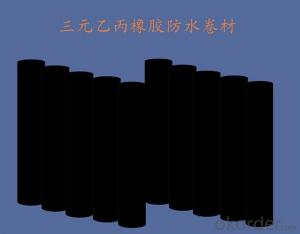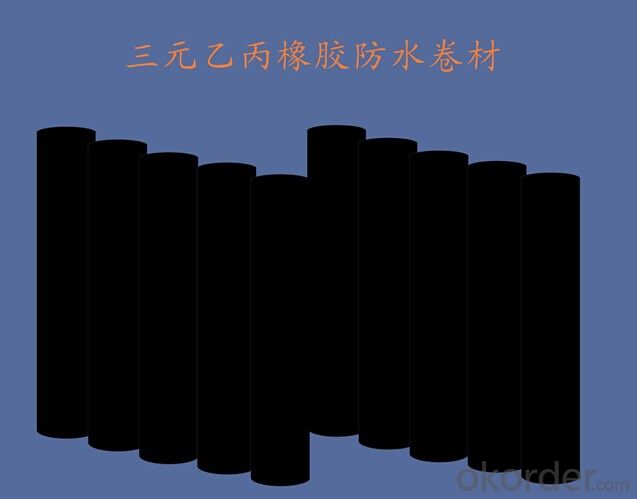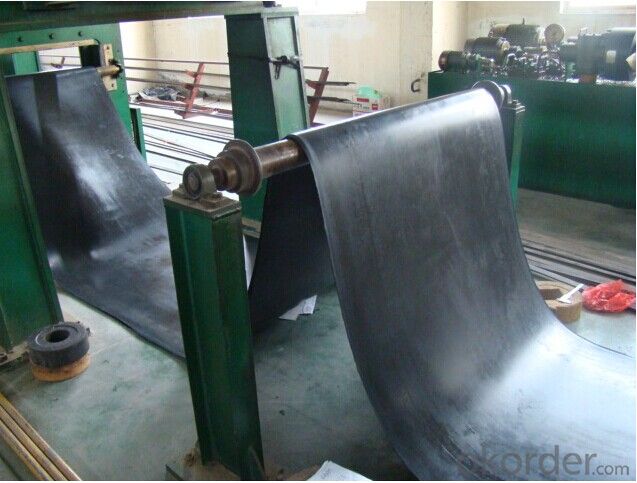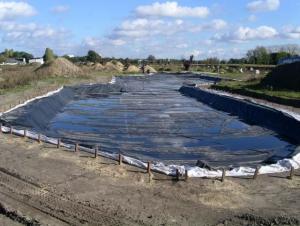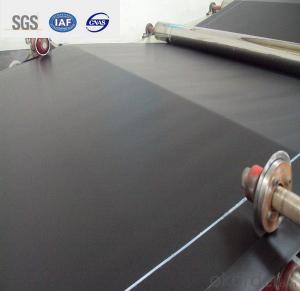EPDM Pond Liner Manufacturer with 15-year Experience
- Loading Port:
- Qingdao
- Payment Terms:
- TT OR LC
- Min Order Qty:
- 2000 m²
- Supply Capability:
- 100000 m²/month
OKorder Service Pledge
OKorder Financial Service
You Might Also Like
1. Product Introduction:
This waterproof coiled material is of high elasticity with best performance among high polumer
waterproof coiled material in the world.It is also the most typical one in the world.Waterproof coiled material made of ternary ethylene-propylene rubber is produced withthe use of the most advanced contiuous extrusion and vulcanization technology and related equipments which are specially designed for production of such product.It is good in compactness,without bubble and performance difference in length and breadth,perfomances reach or exceedthe demands of GB18173.1-2000 standard.
2. Product Specification:
There are two installation ways.one is full sticking,the other is hot welding.
Thick | 1.0mm,1.2mm,1.5mm,2.0mm,3.0mm or others |
Width | 1m to 4m |
Length | 20m |
Model | EPDM, EPDM with fabric |
3. Technical Sheet for EPDM Waterproof Membrane:
Number | Item | Unit | Value | |
1 | Size Variation | Thichness | % | ±10 |
Width | % | ±1 | ||
Length | % | Allowed negative | ||
2 | Breaking tensile strength at normal temperature | Mpa | ≥7.5 | |
Breaking tensile strength at 70°C | Mpa | ≥2.3 | ||
3 | Breaking elongation at normal temperature | % | ≥450 | |
Breaking elongation at -20°C | % | ≥200 | ||
4 | Tear strength | KN/m | ≥25 | |
5 | Impermeability(30min) | * | 0.3Mpa no leakage | |
6 | Bending at low tempreture | °C | ≤-40 | |
7 | Stretch tensor at heating | Elongate | mm | ≤2 |
Shrink | mm | ≤4 | ||
8 | Air oven aging(80°C×168h) | Tensile strength at break retained | % | ≥80 |
Elongation at break retained | % | ≥70 | ||
9 | Anti-alkali | Tensile strength at break retained | % | ≥80 |
Elongation at break retained | % | ≥80 | ||
10 | Nuture weathing at manual simulation | Tensile strength at break retained | % | ≥80 |
Elongation at break retained | % | ≥70 | ||
4. Product Application:
EPDM waterproof membranes form an effective barrier to liquid water or water vapor in the roof construction for industrial and civil engineering, underground engineering such as subway & tunnel, water conservancy such as water pools & ditch, shelter, grain depot, land filling, dyke and subway.
5. Some photos:
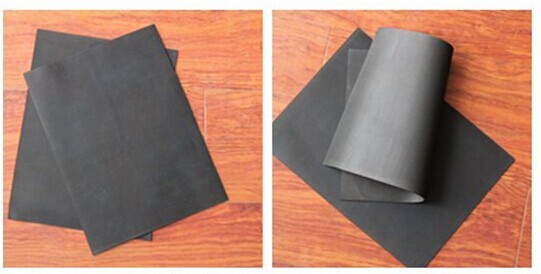
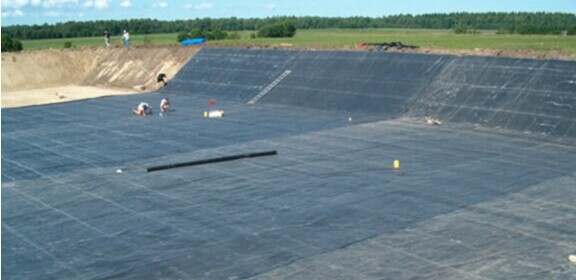
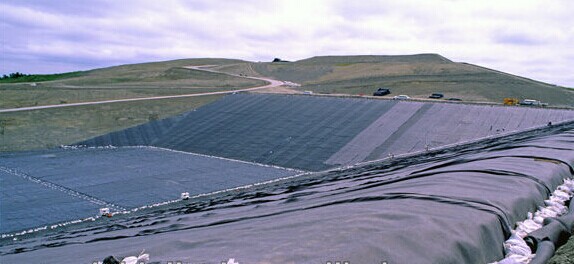
- Q: Can a waterproofing membrane be used for underground utilities?
- Yes, a waterproofing membrane can be used for underground utilities. Waterproofing membranes are designed to provide a barrier against water penetration, protecting the underlying structure from moisture damage. This can be particularly important for underground utilities, as they are constantly exposed to the surrounding soil and potential water seepage. By applying a waterproofing membrane to underground utilities, such as water pipes, sewer lines, or electrical conduits, it helps prevent water infiltration and subsequent corrosion or degradation of the materials. The membrane acts as a protective layer, keeping the utilities dry and free from moisture-related issues. There are various types of waterproofing membranes available, including sheet membranes, liquid membranes, and spray-applied membranes, each with its own unique properties and installation methods. The choice of membrane will depend on factors such as the specific utility, surrounding soil conditions, and any additional requirements such as chemical resistance or structural reinforcement. It is important to note that proper installation and maintenance of the waterproofing membrane are crucial for its effectiveness. The membrane should be installed by trained professionals, following manufacturer guidelines and industry best practices. Regular inspections and maintenance should also be carried out to ensure the membrane remains intact and functional over time. In summary, a waterproofing membrane can indeed be used for underground utilities, offering protection against water infiltration and preserving the integrity and longevity of the utilities.
- Q: Can a waterproofing membrane be used for plaza decks?
- Yes, a waterproofing membrane can be used for plaza decks. Plaza decks are typically outdoor spaces that require protection from water infiltration to prevent damage to the underlying structure. Waterproofing membranes are designed to create a barrier that prevents water from seeping into the deck and causing issues such as leaks, deterioration, and structural damage. These membranes are often made of materials such as bitumen, rubber, or polyurethane, which are highly resistant to water penetration. By installing a waterproofing membrane on a plaza deck, it ensures that the deck remains watertight and protects the integrity of the entire structure. Additionally, these membranes can also provide added benefits such as UV resistance, durability, and ease of maintenance, making them an ideal solution for plaza decks.
- Q: Can a waterproofing membrane be painted or covered with a protective layer?
- Indeed, it is possible to paint or apply a protective layer to a waterproofing membrane. Nonetheless, it is crucial to select the appropriate paint or protective layer that is explicitly formulated for use with waterproofing membranes. This guarantees the preservation of the membrane's integrity and its ability to effectively safeguard against water damage. Additionally, adhering to the manufacturer's instructions and recommendations during the application process is of utmost importance. This may involve adequate surface preparation, utilization of suitable application techniques, and adherence to maintenance instructions. By adhering to these guidelines, the waterproofing membrane can be painted or covered with a protective layer while maintaining its efficacy.
- Q: Can a waterproofing membrane be applied to vertical surfaces?
- Vertical surfaces can indeed have a waterproofing membrane applied to them. In reality, waterproofing membranes are frequently utilized on vertical surfaces, like walls, foundations, and retaining walls, for the purpose of safeguarding against water infiltration. These membranes are specifically engineered to stick to vertical surfaces and create a protective barrier against water, thereby thwarting moisture from seeping into the structure. The process of application generally involves cleansing and preparing the surface, applying a primer if necessary, and then affixing the waterproofing membrane using an appropriate adhesive or mechanical fastening system. This guarantees that the membrane forms a continuous and secure seal, effectively preventing water from penetrating. In summary, waterproofing membranes provide an efficient solution for waterproofing vertical surfaces and are extensively employed in construction and building maintenance projects.
- Q: Can a waterproofing membrane be installed on metal surfaces?
- Yes, a waterproofing membrane can be installed on metal surfaces. There are various types of waterproofing membranes available, including those specifically designed for metal substrates. These membranes are often made of materials such as PVC, TPO, or EPDM, which are flexible and can adhere well to metal surfaces. The installation process typically involves cleaning and preparing the metal surface, applying a primer if necessary, and then applying the waterproofing membrane using adhesive or heat welding techniques. This provides a protective barrier against water infiltration and helps to prevent corrosion and damage to the metal surface. It is important to ensure that the chosen waterproofing membrane is compatible with the specific type of metal being used and that proper installation procedures are followed to achieve effective waterproofing.
- Q: Can waterproofing membranes be used on elevator pits?
- Yes, waterproofing membranes can be used on elevator pits. Elevator pits are prone to water infiltration, and using waterproofing membranes can help prevent water damage and corrosion in the pit area. The membranes create a barrier that prevents water from seeping into the pit, ensuring its dryness and structural integrity.
- Q: Are waterproofing membranes resistant to efflorescence?
- Yes, waterproofing membranes are generally resistant to efflorescence. Efflorescence is the white residue that appears on the surface of materials such as concrete, brick, or stone due to the migration of salts to the surface. Waterproofing membranes are designed to create a barrier against water and moisture, preventing them from seeping into the material and carrying the salts to the surface. By effectively blocking the entry of water, waterproofing membranes minimize the occurrence of efflorescence and provide long-term protection against it. However, it is important to note that the effectiveness of a waterproofing membrane in preventing efflorescence may depend on the quality and application of the membrane, as well as the specific environmental conditions and the presence of underlying issues such as water infiltration or inadequate drainage.
- Q: Can a waterproofing membrane be used for shipping containers or cargo holds?
- Yes, a waterproofing membrane can be used for shipping containers or cargo holds. It acts as a protective layer that prevents water from entering the containers or cargo holds, keeping the contents dry and protected during transportation.
- Q: Can waterproofing membranes be used in wet areas like bathrooms?
- Yes, waterproofing membranes can be used in wet areas like bathrooms. These membranes are specifically designed to create a barrier against moisture and prevent water from seeping into the underlying surfaces. Applying waterproofing membranes in bathrooms is a common practice to protect the structural integrity of the space and prevent any water damage.
- Q: Can a waterproofing membrane withstand heavy rain or water pressure?
- A waterproofing membrane is specifically designed to endure heavy rain or water pressure. Its main purpose is to establish a barrier that obstructs water from infiltrating a structure or surface. Generally, these membranes are composed of materials like rubberized asphalt, PVC, or EPDM (ethylene propylene diene monomer), which possess a remarkable resistance against water and can effectively endure heavy rain or water pressure. Furthermore, these membranes are frequently fortified with layers or fabrics to offer additional strength and durability. Consequently, when accurately installed and regularly maintained, a waterproofing membrane can effectively endure heavy rain or water pressure, ensuring dependable protection against water damage.
Send your message to us
EPDM Pond Liner Manufacturer with 15-year Experience
- Loading Port:
- Qingdao
- Payment Terms:
- TT OR LC
- Min Order Qty:
- 2000 m²
- Supply Capability:
- 100000 m²/month
OKorder Service Pledge
OKorder Financial Service
Similar products
Hot products
Hot Searches
Related keywords


